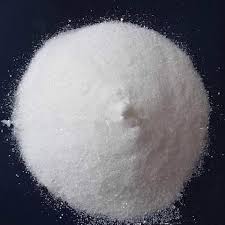
Sodium sulfite is a versatile inorganic compound widely used across food, industrial, and laboratory settings. Its unique chemical properties make it indispensable for preserving products, treating water, and supporting manufacturing processes. This guide breaks down its key characteristics, practical applications, and critical safety protocols—all based on verified scientific data to ensure reliability.
What Is Sodium Sulfite?
Sodium sulfite, with the chemical formula Na₂SO₃, is an odorless, white crystalline powder or granular solid. It is classified as a sulfite compound, meaning it contains the sulfite ion (SO₃²⁻), which drives its most important chemical behavior: strong reducing properties.
Naturally, sodium sulfite does not occur in large quantities in the environment. It is produced commercially through the reaction of sulfur dioxide (SO₂) with sodium hydroxide (NaOH) or sodium carbonate (Na₂CO₃), a process that adheres to industrial safety and quality standards.

Key Chemical Properties of Sodium Sulfite
Understanding sodium sulfite’s properties is essential to its safe and effective use. These traits directly influence its role in various applications:
- Reducing Agent: It readily donates electrons to other substances, making it effective for neutralizing oxidizers (e.g., chlorine in water) and preventing oxidation (e.g., browning in fruits).
- Solubility: It dissolves easily in water to form a slightly alkaline solution (pH ~8-9), but it is insoluble in organic solvents like ethanol or acetone.
- Stability: It is stable under dry, cool conditions. However, it decomposes when exposed to strong acids (releasing sulfur dioxide gas) or high temperatures, and it oxidizes in air over time to form sodium sulfate (Na₂SO₄), a less reactive compound.
Practical Applications of Sodium Sulfite
Sodium sulfite’s versatility stems from its reducing and preservative properties. Below are its most common, industry-verified uses:
1. Food and Beverage Industry
It is approved as a food additive (designated E221 in the European Union and generally recognized as safe, or GRAS, by the U.S. FDA) for two key purposes:
- Preservation: Inhibits the growth of bacteria and fungi in processed foods like dried fruits, pickles, and canned vegetables, extending shelf life.
- Color Retention: Prevents enzymatic browning in fresh-cut fruits (e.g., apples, potatoes) and maintains the bright color of seafood (e.g., shrimp) during storage.
- Wine and Beer Production: Removes excess chlorine from water used in brewing and winemaking, and acts as an antioxidant to protect flavor and prevent spoilage.

2. Industrial and Manufacturing Uses
- Water Treatment: Neutralizes chlorine and chloramines in municipal or industrial water supplies. This is critical for protecting sensitive equipment (e.g., reverse osmosis membranes) and ensuring water safety for industrial processes.
- Paper and Pulp Industry: Serves as a bleaching agent for wood pulp, helping to break down lignin (the substance that gives wood its rigidity) and produce bright, high-quality paper.
- Textile Industry: Acts as a reducing agent in dyeing processes, helping to fix dyes to fabrics (e.g., cotton, wool) and prevent color fading.
3. Laboratory and Analytical Uses
- Chemical Reagent: Used to reduce oxidizing agents (e.g., potassium permanganate) in titration experiments, a common technique for measuring chemical concentrations.
- Wastewater Treatment: Helps remove heavy metals (e.g., lead, mercury) from laboratory wastewater by forming insoluble sulfite complexes that can be filtered out.
Safety Guidelines for Handling Sodium Sulfite
Sodium sulfite poses health and safety risks if mishandled. Following these guidelines—aligned with standards from the U.S. Occupational Safety and Health Administration (OSHA) and the Globally Harmonized System (GHS)—is critical:
Health Risks
- Skin and Eye Irritation: Direct contact can cause redness, itching, or burns. Inhalation of dust may irritate the nose, throat, and lungs, leading to coughing or shortness of breath.
- Allergic Reactions: Some individuals (especially those with asthma) may experience severe allergic responses, including anaphylaxis, if exposed to sulfites. This is why food labels in many countries require disclosure of sulfite additives.
Safe Handling Practices
- Personal Protective Equipment (PPE): Wear nitrile gloves, safety goggles, and a dust mask when handling dry sodium sulfite to avoid contact or inhalation.
- Storage: Keep in a sealed, airtight container in a cool, dry area. Store separately from acids, oxidizers (e.g., hydrogen peroxide), and food products to prevent reactions or contamination.
- First Aid: If skin or eyes are exposed, flush with cool water for 15 minutes. If inhaled, move to fresh air and seek medical attention if symptoms persist.
Environmental Considerations
Avoid releasing sodium sulfite into waterways or soil. It can react with natural acids in the environment to release sulfur dioxide, which contributes to air pollution, and high concentrations in water can harm aquatic life. Dispose of unused or waste material according to local hazardous waste regulations.
Conclusion
Sodium sulfite is a high-value compound that supports critical processes in food safety, manufacturing, and science. Its effectiveness depends on understanding its chemical properties, while its safe use relies on following established guidelines from regulatory bodies like the FDA and OSHA. By adhering to best practices for handling and disposal, industries can leverage its benefits while minimizing risks to human health and the environment.
